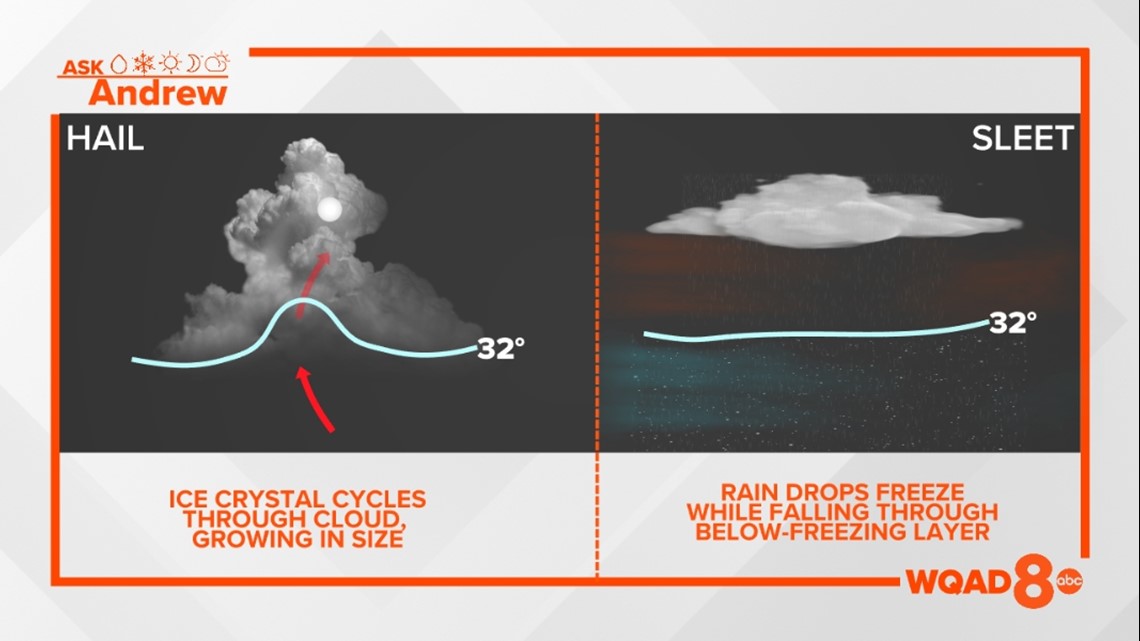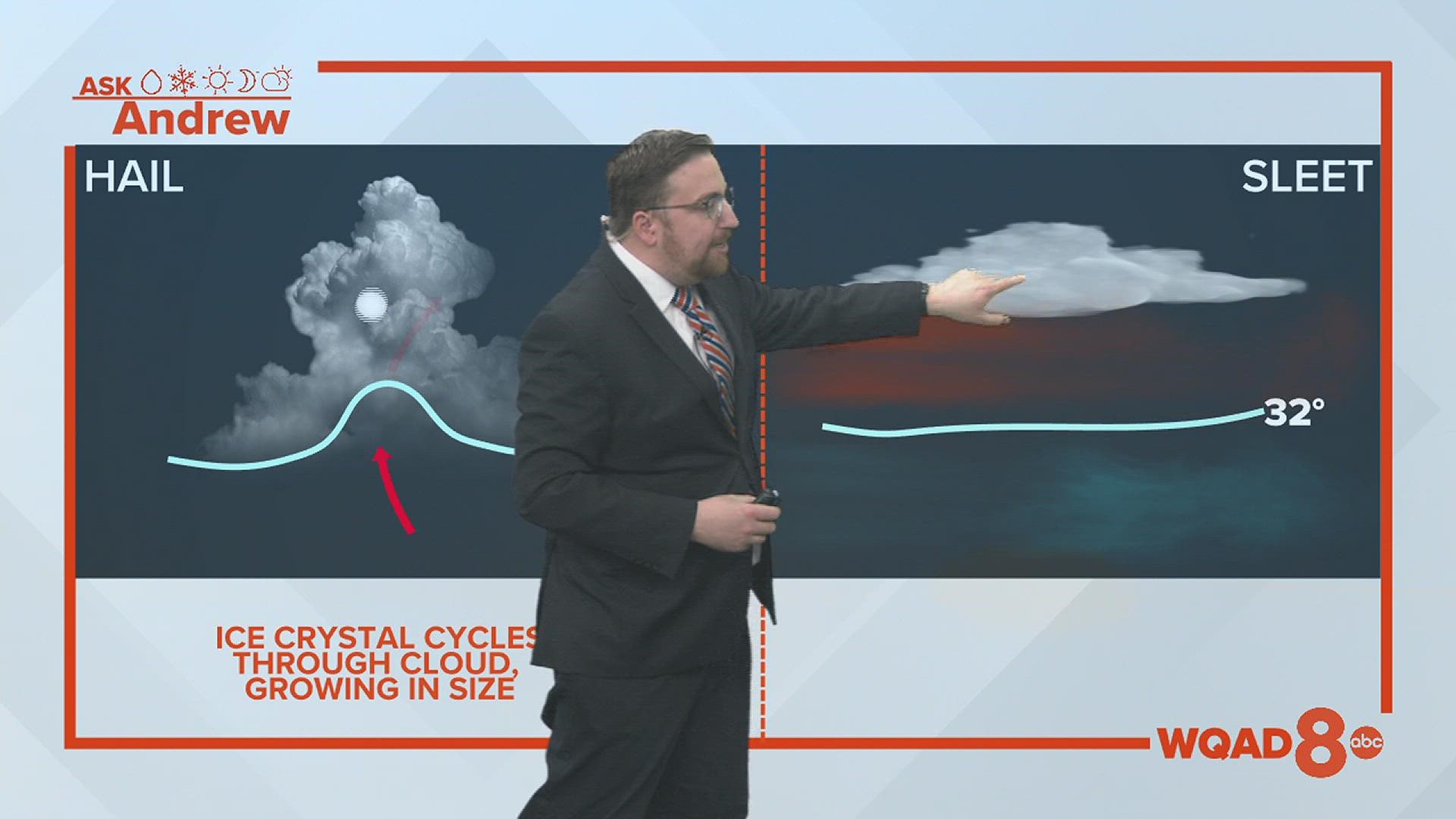ROCK ISLAND, Ill. — Sleet and even hail made a quick appearance in the Quad Cities this past week and that led Elizabeth of Rock Island, Illinois, to ask, "What is the difference between hail and sleet?" While they may appear similar in appearance depending on their size, it's the process that creates them where differences begin to arise.
Hail is always associated with thunderstorms that contain a strong updraft, or column of rapidly rising air into the storm. This updraft keeps growing ice crystals supported in the air, allowing them to grow bigger in size as they collide with other ice crystals and also drop briefly into the air that is above freezing, picking up another layer of water droplets. Eventually, the hailstone becomes so heavy that the strong updraft can no longer support its weight, allowing it to fall to the ground.


Sleet is a different process in that it doesn't involve a thunderstorm or a strong updraft. Rather, it relies on two different air masses being present below the cloud. The air mass just below the cloud itself is above freezing, while the air mass closer to ground level is below freezing. What initially starts as rain, drops into the layer of air below freezing, turning the rain droplets into frozen droplets that we call sleet! Sleet, of course, won't damage your car or your home like hail does, but it sure can make the roads slick in a hurry!
Have a weather-related question you'd like me to answer? Click here!

